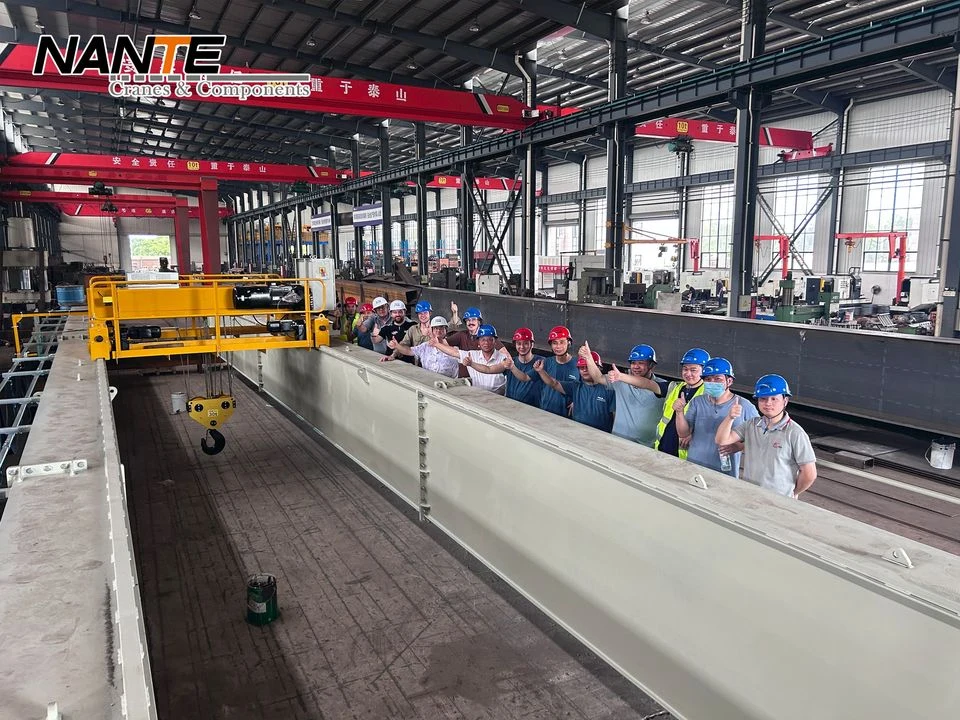Why After-Sales Service Defines the True Value of a Crane Supplier
Why After-Sales Service Defines the True Value of a Crane Supplier
Date: 2025-11-07 Share:
Introduction: The Hidden Costs of Ignoring Crane After-Sales Support
In the competitive world of industrial lifting, crane after-sales support separates reliable suppliers from the rest. While the initial purchase price often grabs attention, the true value of a crane lies in ongoing service and warranty programs that prevent downtime, extend equipment lifespan, and ensure operational safety. A leading crane maintenance provider delivers complete solutions—from rapid spare parts delivery to expert operator training—helping businesses cut total ownership costs by up to 30% through preventive maintenance.
Why Crane After-Sales Support Outweighs Initial Purchase Price
Many firms check crane suppliers and look mostly at costs right away. But, what really sets the worth is the total cost of ownership (TCO). This adds up every expense over the full life of a crane.
Sudden stops in work can wreck daily runs. Research points out that each hour of unexpected crane downtime may cost more than $10,000 in missed output. This hits hard in making goods or moving items. Good after-sales support can cut these losses by up to 50%. It keeps runs steady and safe.
A typical TCO breakdown looks like this:
Initial purchase: 40%
Maintenance and inspections: 30%
Spare parts and repairs: 15%
Energy and operational costs: 15%
Sites with set crane after-sales plans and care before issues report gear that lasts 20–25% longer. They also see much better returns on money spent. This beats places that only fix things after they break.
The Risks of Poor After-Sales Service
Skipping good after-sales care puts your firm at big dangers. Here are some main ones:
Safety Hazards: Faulty cranes can lead to severe accidents. OSHA and CMAA standards require periodic inspections to maintain workplace safety.
Productivity Loss: Delayed repairs or missing parts can halt entire production lines, leading to cascading losses.
Escalating Costs: Emergency breakdown repairs often cost 2–3 times more than planned maintenance. Preventive service minimizes these spikes and improves budget predictability.
Comprehensive Maintenance Support from Your Crane Maintenance Provider
Expert upkeep services mark the best suppliers from average ones. A solid crane maintenance provider gives both care ahead of time and quick fixes when needed. These fit your daily work.
- Preventive maintenanceinvolves scheduled monthly or annual inspections to detect early wear or misalignment, ensuring compliance with OSHA and CMAA standards.
- Reactive maintenancefocuses on immediate repairs after failures, but relying solely on this approach increases long-term costs.
Top providers give help at the site or from far away. This covers 24/7 quick calls for emergencies, oiling parts, setting things straight, and swapping out pieces. Steady care plans can raise crane uptime by up to 40%. They save lots of money each year by stopping big breaks.
Key Maintenance Checklist for Overhead and Gantry Cranes
Key Maintenance Checklist for Overhead and Gantry Cranes
| Component | Inspection Frequency | Common Issues Fixed |
| Hoist & Trolley | Monthly | Wear, misalignment |
| Electrical Systems | Quarterly | Wiring faults, control issues |
| Runway & Rails | Annually | Alignment, corrosion |
| Safety Features | Before each use | Limit switches, brakes |
Companies stick to a regular check plan. This builds trust in gear. It meets rules from authorities. And it makes cranes last through more cycles.
Service and Warranty: Your Safety Net for Long-Term Reliability
Warranties act like a soft pad for surprise breaks. Normal crane warranties usually cover 1–2 years for parts and work done. Longer choices can go up to five years for tough or special cranes.
A full warranty covers fixes and swaps for key pieces. It also includes help at the site from trained experts. To keep the warranty good, use an approved crane maintenance provider. All fixes must match OEM standards.
Great warranties bring calm feelings and costs you can plan. Weak or ended warranties might make repair bills twice as high over time.
Choosing Extended Service Contracts
Longer service deals give protection over years and sure help. Their good points include:
- Priority service responseduring breakdowns.
- Discounted labor and spare partscosts.
- Proactive maintenance schedulingfor optimal uptime.
For instance, one steel plant shared savings of over $50,000 each year with longer upkeep deals. This shows that putting money in lasting service pays off in clear ways.
Spare Parts Availability: Minimizing Downtime in Crane Operations
In work with cranes, every minute stopped counts a lot. Fast reach to needed spare parts can turn a small wait into a big costly stop. Or it can keep things moving.
Key parts like hoists, brakes, wire ropes, and wheels need stock based on how often the crane runs and work conditions. Trusty suppliers keep spare part stocks around the world. They offer same-day or next-day sending. Even a brief wait for parts can cost up to $5,000 per hour in lost making.
New tools use IoT to guess stock needs. They spot wear patterns in pieces and warn workers before breaks happen. This guess-ahead way keeps work going without stops. It cuts emergency fix costs a great deal.
Top Spare Parts to Keep in Stock
- Brake linings/pads– high wear components that ensure safe stopping.
- Wire ropes/cables– frequent replacement items under heavy use.
- Wheels/flanges– crucial for smooth runway motion.
- Motors/drives– core power systems for hoisting and travel.
- Festoon cables– protect electrical connections and maintain safety compliance.
Essential Operator Training for Safe and Efficient Crane Use
Even top cranes need good operators to work right. Full operator training forms a big part of strong after-sales support.
Training covers simple and hard levels. It includes OSHA and NCCCO certifications, ways to rig loads, plans for emergencies, and practice with load handling. Suppliers with classes at the site or online help workers keep learning and stay within rules.
Operators with good training cut down on job accidents. They make gear work better. Numbers show up to 70% fewer crashes with certified training.
Training Levels and Certifications
Training Levels and Certifications
| Level | Duration | Covers |
| Beginner | 3–5 days | Safety basics, controls, inspection |
| Advanced | 1–2 weeks | Load dynamics, troubleshooting, maintenance |
| Recertification | Annually | OSHA updates, refresher safety modules |
Firms put money in set operator training. This builds a setting of safety and smooth work. Cranes then run at their best level.
Building Long-Term Relationships with Your Crane Supplier
A real bond with a crane supplier goes past the first buy and upkeep deals. Making a lasting tie brings ongoing wins like:
- Customized system upgradestailored to evolving operational needs.
- Priority accessto service teams and spare parts.
- Volume-based discountsand loyalty rewards.
Good bonds get checked with key performance indicators (KPIs). Examples include uptime over 95% and service help in 24 hours. These numbers show how well the supplier keeps promises and how happy customers stay.
Steps to Foster Supplier Partnerships
- Establish clear service contractswith measurable KPIs.
- Hold regular performance reviewsand feedback sessions.
- Collaborate on joint training and maintenance planningfor long-term improvement.
This team way not only lifts crane work but also builds firm strength through steady service you can count on.
FAQ
What makes a reliable crane maintenance provider?
A provider with 24/7 quick answers, OEM-certified spare parts, skilled techs, and strong records on uptime.
How long should crane warranties last?
Normal ones cover 1–2 years, but cranes in heavy use gain from longer 3–5 year deals.
Why prioritize spare parts in after-sales support?
Fast access to key parts cuts downtime by up to 80%. This keeps work flowing without breaks.
Is operator training mandatory?
Yes. OSHA requires certified operator training. Recertification comes every 3–5 years.
How can companies build long-term relationships with crane suppliers?
Set clear goals, do regular checks, and put money in shared care and training plans.
Partner with Nante Crane for Superior After-Sales Excellence
Feel top-level crane after-sales support with Nante Crane. Nante Crane serves as your trusted crane maintenance provider. Get 12-month warranties, 24-hour help around the world, training for operators at the site, parts kept in stock, and ties for service that last a lifetime. All aim for zero stops in work.
Go to https://www.nantecrane.com/ now. Or reach out for a free talk. Learn how Nante Crane can keep daily runs safe, easy, and without hitches.





